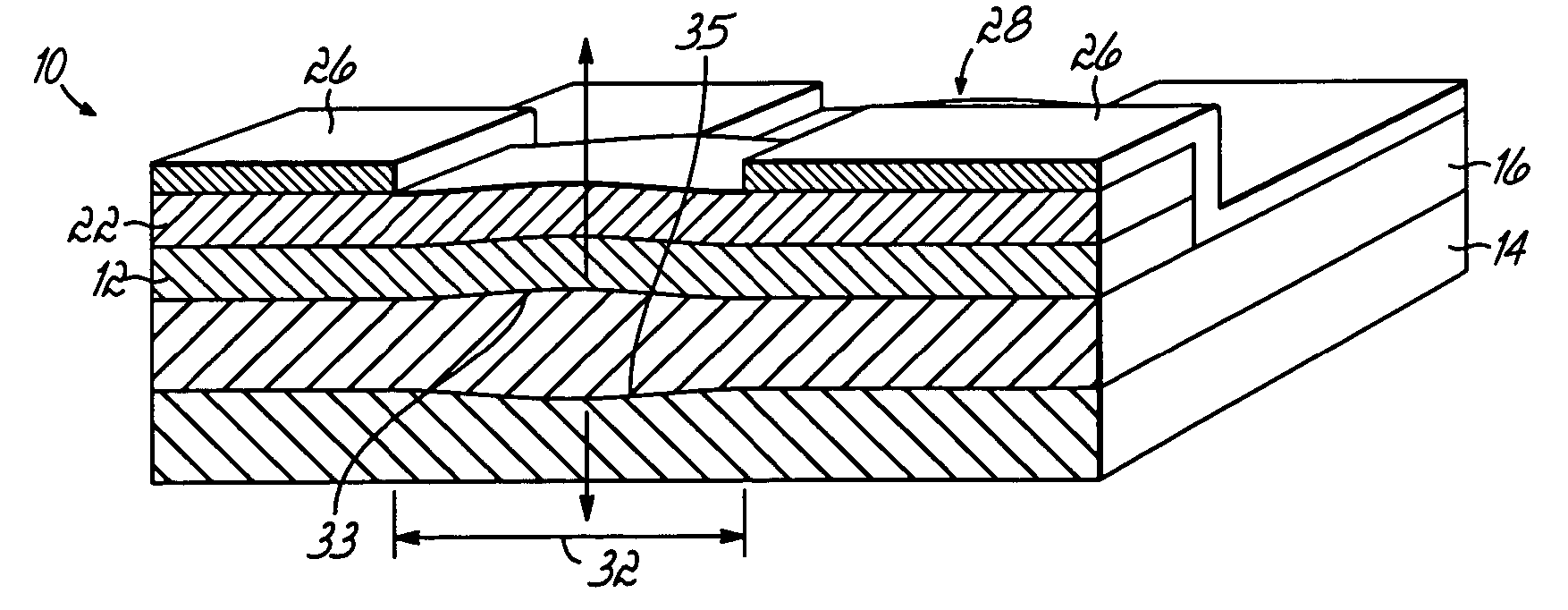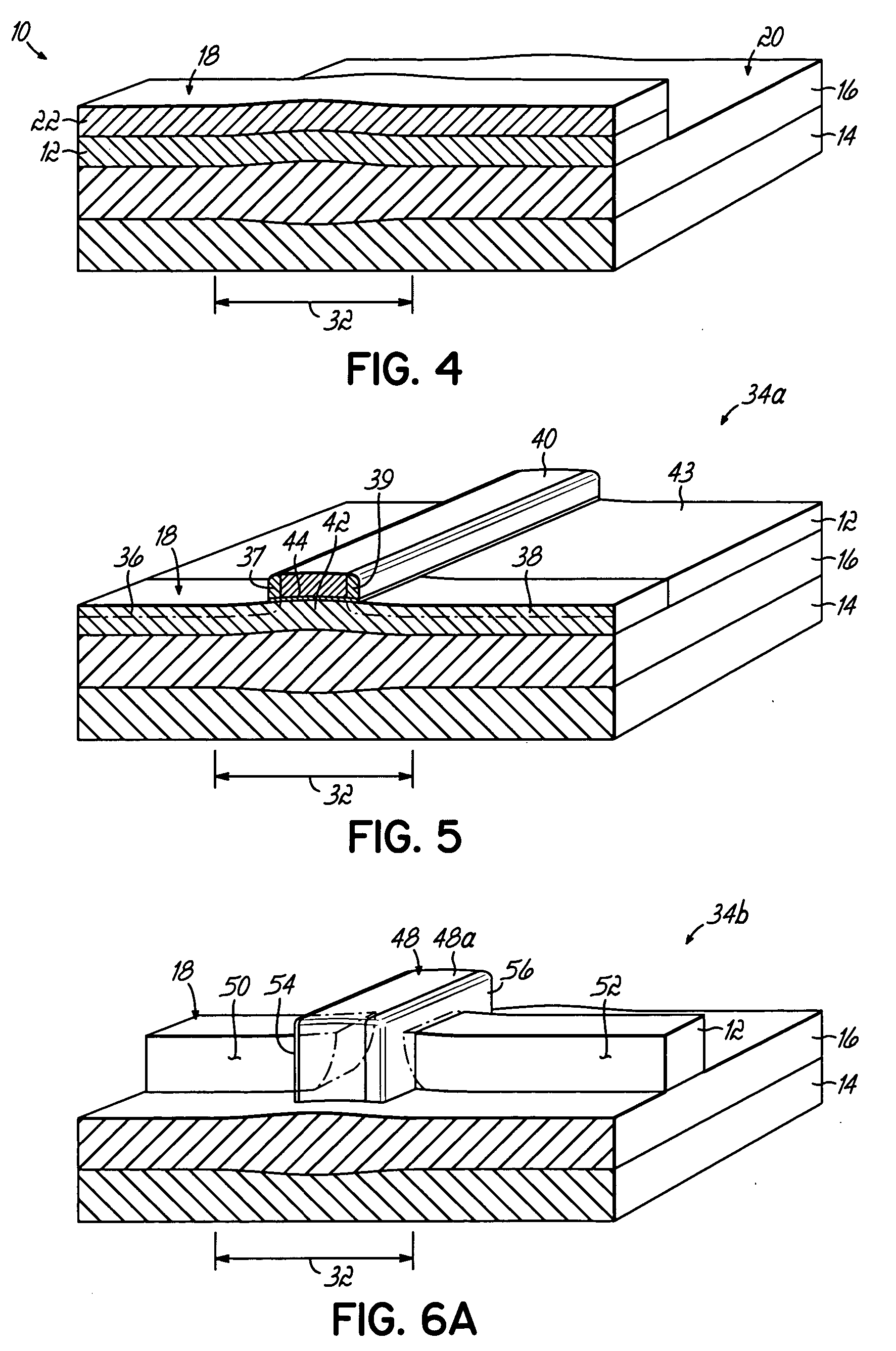Method for fabricating strained silicon-on-insulator structures and strained silicon-on insulator structures formed thereby
a technology of strained silicon and strained silicon, which is applied in the direction of semiconductor devices, electrical devices, transistors, etc., can solve the problems of poor thermal conductivity of silicon germanium layers, inability to optimize nfet's and pfet's separately, and the global silicon germanium layers deposited across the wafer are not suitable for optimizing nfet's and pfet's. achieve the effect of improving the device performance and enhancing carrier mobility
- Summary
- Abstract
- Description
- Claims
- Application Information
AI Technical Summary
Benefits of technology
Problems solved by technology
Method used
Image
Examples
Embodiment Construction
[0020] With reference to FIG. 1, a silicon-on-insulator (SOI) substrate 10 includes an active layer 12 of silicon, or another suitable semiconductor material, separated vertically from a handle wafer 14 by an insulating layer 16. Insulating layer 16 electrically isolates the active layer 12 from the handle wafer 14. The SOI substrate 10 may be fabricated by any standard technique, such as wafer bonding or a separation by implantation of oxygen (SIMOX) technique. In the illustrated embodiment of the invention, the silicon constituting the active layer 12 may be doped initially with an n-type dopant to render it n-type or a p-type dopant to render it p-type. The handle wafer 14 may be formed from any suitable semiconductor material including, but not limited to, silicon and polycrystalline silicon (polysilicon). The dielectric material constituting insulating layer 16 is typically silicon dioxide having a thickness in the range of about fifty (50) nanometers to about 150 nanometers, b...
PUM
 Login to View More
Login to View More Abstract
Description
Claims
Application Information
 Login to View More
Login to View More - R&D
- Intellectual Property
- Life Sciences
- Materials
- Tech Scout
- Unparalleled Data Quality
- Higher Quality Content
- 60% Fewer Hallucinations
Browse by: Latest US Patents, China's latest patents, Technical Efficacy Thesaurus, Application Domain, Technology Topic, Popular Technical Reports.
© 2025 PatSnap. All rights reserved.Legal|Privacy policy|Modern Slavery Act Transparency Statement|Sitemap|About US| Contact US: help@patsnap.com



